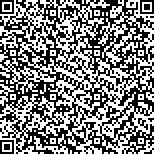| 摘要: |
| 针对传统村落保护与更新过程中
其街巷界面形态出现同质化、雷同化、商品
化等问题,基于冀南山区内与等高线平行、垂
直、斜交三种类型的传统村落主街界面形态
数据,采用分形理论、数理统计学等相关分
析方法,量化描述了冀南山区传统村落主街
底界面与侧界面的形态规律及其组构方式,
总结出与一定量化参数区间所对应的传统村
落主街界面形态特征。 |
| 关键词: 冀南山区 传统村落 主街 界面
形态 量化 |
| DOI:10.13791/j.cnki.hsfwest.20190508 |
| 分类号: |
| 基金项目:河北省社会科学厅基金资助项目(HB18YS009) |
|
| Quantitative Research on Interface Morphology of Main Street of Traditional Villages inMountain Areas of Southern Hebei Province |
|
ZHANG Jianxun,LIAN Haitao,SUN Keke,LI Gaomei
|
| Abstract: |
| Based on specific environment conditions, including geographical,
climate and historical aspects, the traditional villages in southern Hebei province has
formed their own main street space interface features. However, in new or rebuilding
designs, almost all street space features have disappeared, because of no deep
research results.
At present, the researches on street space of traditional villages in China
focus on spatial form recognition, the space redesign, and the protection of their
features. While the methods mostly focus on description and interpretation. With the
introduction of space syntax, the quantitative study on villages’ street morphology
has gradually been emerging. However, it is not proper to provide the specific
mathematical indicators for their interface morphology on villages’ renewal. In
America and Europe, there are many research results on street interface morphology.
And the methods mainly involves five directions: index system, mathematical model,
space syntax, fractal theory and 3S technology.
In geography, the mountain area of southern Hebei province, is located in
the boundary zone between mountain and plain. The terrain descends from east
to west. The land-forms mainly include mountains, hills and basins between
them. The traditional villages mainly distribute in west of Handan City, including
Shexian, Wuan, Cixian and Fengfeng. Totally 31 villages have been selected in the
national traditional village list. In landform and topography aspects, there are many
similarities and differences, and all of them have formed the regional characteristics
of the street-lane interface. Because development speed of them is relatively slow, the
Ming and Qing Dynasties’ features of dwellings and streets has obviously been kept.
Based on the relation between main street and mountain contours, streets should be
divide into three types: parallel, vertical and oblique to the contour line.
The nine traditional villages has been chosen as samples. Based on research
results on urban street interface, system modes of index and fractal theory, this paper
constructs a quantitative analysis framework for street interface morphology. The
framework includes sample data collection, the parameters’ selection and calculation
method etc. |
| Key words: Mountainous Area in Southern Hebei Province Traditional Villages Main Street Interface Morphology Quantization Research |


